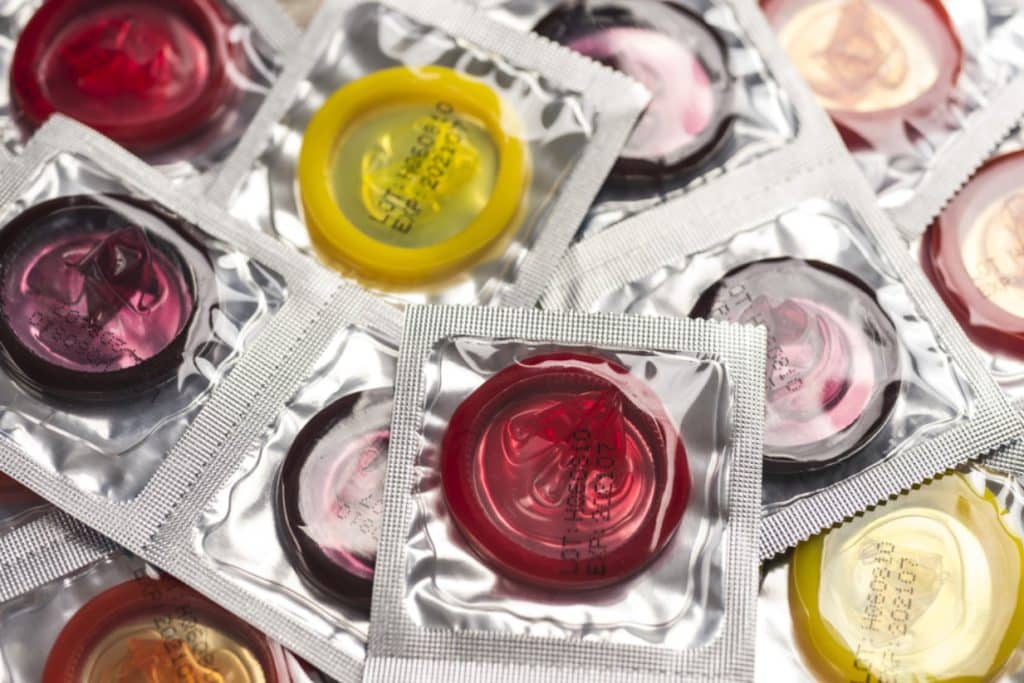Pregnancy is a thing of great joy, especially when it comes when you’re expecting it. Sometimes, some couples are not just ready for it yet, hence, the need for barrier methods of contraception, also known as family planning.
There are different methods of birth control. Some are temporal (e.g. use of condoms or oral contraceptives) while some are permanent (e.g. tubal ligation, hysterectomy or vasectomy.) In some cases, these methods can come over the counter or with a doctor’s prescription.
In this article, our focus will be on the barrier methods of birth control. You will get to know what barrier contraceptives are, how effective they are and the types available.

What Are Barrier Contraceptives?
Barrier methods of birth control prevent sperm from getting to the egg during sexual intercourse. This prevents pregnancy from happening. Some of these methods don’t just protect against conception, they can also provide protection against some sexually transmitted infections.
As we mentioned earlier, some barrier contraceptives come over the counter e.g. condom and sponge. On the other hand, you may need a valid prescription to get other options like the cervical cap and diaphragm. All of these methods work best when you use them with a spermicide.

Are Barrier Contraceptives Effective?
Apart from abstinence, mo barrier contraceptive or birth control method is 100% effective in preventing pregnancy.
Barrier methods are not as effective as some other types of birth control methods such as intrauterine devices (IUD), birth control implants, or injections. In fact, studies show that a woman may still get pregnant despite using barrier contraceptives during sex.
Remember, barrier contraceptives only work best when used correctly during sex. Pregnancy can still happen when you are using the barrier method of contraception and one of the following occurs:
- You forgot to use it.
- The barrier breaks.
- The barrier becomes dislodged.
- If you do not use it properly.
If any of the above happens, you can consider emergency contraception.
Types of Barrier Contraceptives
There are different barrier methods available today. They include condoms, diaphragm, cervical cap, sponge, and spermicide.
1. Condoms
Condoms act as a physical barrier that prevents the sperm from entering the uterus, preventing the possibility of fertilization. There are different condoms for both males and females.

The male condoms, or external condoms, are worn on the erect penis before sexual intercourse. They are made of rubber (latex), plastic (polyurethane), or lambskin membrane. Rubber and plastic provide the best protection against many sexually transmitted infections (STIs) including HIV. Condoms made of lambskin do not provide protection against STIs.
The female condoms, or internal condoms, are placed inside the vagina. The female condom is made of a thin plastic pouch that lines the vagina. It is opened on one end and closed at the other end. The closed-end is placed inside the vagina, at the cervical ring while the opened end is placed at the opening of the vagina. The female condom also provides protection against STIs.
2. Diaphragms
The diaphragm is made of a rubber or silicone dome with a fir, flexible rim. It fits inside the vagina and covers the cervix. For effectiveness, you should combine the diaphragm and a spermicide. Diaphragms are only available on prescription, so a woman must visit the health care facility to get a prescription for one.
The barrier contraceptive must be in place about four hours before intercourse. After intercourse, you’ve also got to check for possible breaks or dislodgement.
3. Cervical caps
It is made of a plastic dome that fits the cervix tightly and is held in place by suction. It prevents the sperm from entering the uterus and must be used with a spermicide for effectiveness. Furthermore, it is important to note that you need a valid prescription to use a cervical cap.
The cervical cap does not provide any form of protection against STIs. For full protection, the best bet is to combine your cervical cap with a sponge.

4. Sponges
Contraceptive sponges are made of thick plastic foam discs. In its proper position inside the vagina, this barrier contraceptive covers the cervix and prevents conception. It usually releases a spermicide which provides most of its contraceptive efficacy. This provides protection for the woman for up to 24 hours even if she has sex more than once.
The sponge does not provide protection against STIs. For effective protection from sexually transmitted infections, it is best to combine a condom and a sponge during sex.
Contraceptive sponges are also not as effective in women who have given birth as in women who have not. Women who have just given birth should wait for up to six weeks before using a contraceptive sponge. This is beause the uterus and cervix need enough time to return to their normal size.
5. Spermicide
Spermicide is a chemical that kills sperms.
Spermicides are placed into the vagina before intercourse in order to prevent viable sperms from reaching the uterus. They come in form of jelly, foam, film, cream or suppository. It also comes with an applicator that is placed in the vagina before sex.
Bottom line
The different barrier method of birth control works best in different situations. They also have varying advantages and disadvantages. You should go for one that best suits you and your partner.
Also, you should consult your doctor about the birth control method that is best for you and your partner. This way you can get a prescription and quality medical advice.
Conclusion
In the circle of barrier methods of contraception, the male condom and diaphragm work best in preventing pregnancy. The cervical cap and sponge work as well as the male condom or diaphragm for women who have not had a vaginal birth.
For women who have had at least one vaginal birth, the cap or cervical cap is not effective. The female condom is also not as effective as the male condom. Nevertheless, this article contains all you need to make the right choice.

